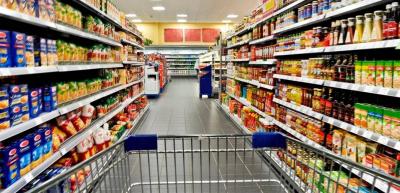The economic crisis in Lebanon has enabled the dollar to control citizens' lives, and the fluctuations in the exchange rate of the national currency against the dollar now determine people's consumption capacity and direction, with a noticeable and exhausting variation in prices between stores.
When Caroline Sadeq goes grocery shopping in the Lebanese capital, Beirut, she keeps her phone handy, not to remind her of her shopping list, but to calculate the rising prices of goods, which are now tied to varying exchange rates depending on the store and sector. With the ongoing collapse of the Lebanese economy, different exchange rates for the lira have emerged, complicating personal accounting and weakening hopes of meeting the reform requirements set by the International Monetary Fund (IMF).
The official exchange rate was adjusted to 15,000 lira per dollar in February, a 90% reduction in the value of the Lebanese currency compared to the previous long-standing official rate of 1,507.5 lira to the dollar. However, the Central Bank of Lebanon sells the dollar at a rate of 79,000 lira, while the Minister of Finance intends to calculate the customs tariff for imported goods based on an exchange rate of 45,000 lira per dollar.
At the same time, the exchange rate on the parallel market fluctuates around 107,000 lira per dollar and changes daily. Large stores and gas stations are required to post signs with the exchange rate adopted each day, but the rate changes so quickly that many of these places price products in relatively stable US dollars. Caroline explains the daily predicament faced by shoppers as she inspects a can of tuna in one of the stores, questioning, "Does this not have a 'set' price? If you look, the price is in Lebanese lira; is this the price? Or is it an old price, and there's a price in dollars now?"
Caroline resigned from her teaching job at a school that paid her salary in local currency, which has lost more than 98% of its value against the dollar in the parallel market since 2019. This collapse began when the economy started to deteriorate after decades of unsound financial policies and alleged corruption.
To resolve the confusion caused by the exchange rate, the government must implement a unified rate. This is one of the prerequisites set by the IMF nearly a year ago for Lebanon to secure a $3 billion rescue package. Yet, the fund has stated that reforms are progressing too slowly, facing resistance from politicians who seek to protect private interests and avoid accountability.
Meanwhile, the country has been heading towards a cash-based economy and dollar dependency amid rising inflation and restrictions imposed by banks on transactions. A store owner named Mahmoud al-Shaar noted that the exchange rate changes so rapidly that his shop loses money overnight. Like many store owners, al-Shaar has to pay for goods in dollars while selling in Lebanese lira. One day, he may sell all his goods based on one exchange rate only to wake up the next day to find the dollar jumped by nearly 10,000 lira.
Al-Shaar stated, "Sales dropped, and what we earn we lose because of the exchange rate." Economic expert Samir Nasr highlighted that the varying exchange rates across different sectors make personal accounting "chaotic" for the Lebanese, adding that unifying the exchange rate has become more urgent than ever. He further noted, "It requires a complete set of reforms and steps that will allow for the stabilization of the economic situation overall, and then enable the unification of the exchange rate."




